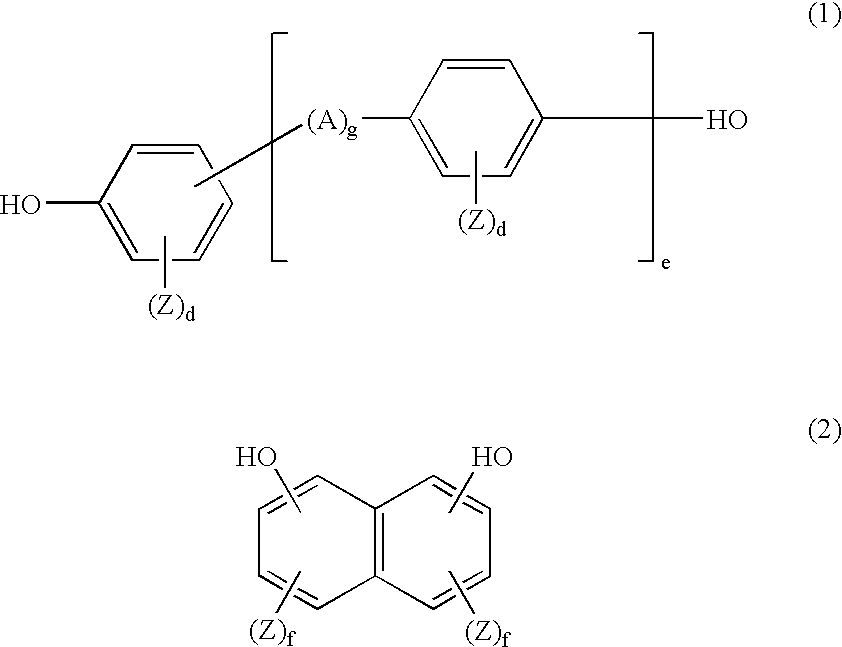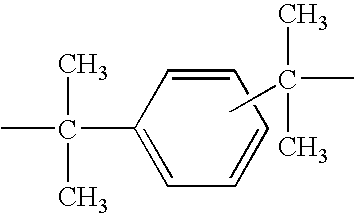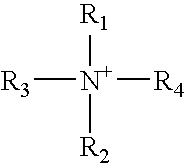Thermoplastic composition containing polycarbonate-polyester and nanoclay
a technology of polycarbonate polymer and nanoclay, which is applied in the field of polycarbonate-polyester nanoclay filling compositions, can solve the problems of adversely affecting the appearance of molded parts, inadequate stiffness (flexural modulus) for certain structural applications, etc., and achieves the effect of improving melt stability and impact strength
- Summary
- Abstract
- Description
- Claims
- Application Information
AI Technical Summary
Benefits of technology
Problems solved by technology
Method used
Image
Examples
examples
[0043] Compositions in accordance with the present invention were prepared and their properties evaluated. The preparation of these compositions and their testing were conventional; the properties are tabulated below.
[0044] The components used in preparing the exemplified compositions were:
[0045] Polycarbonate 1: Makrolon 5208 a powder-form homopolycarbonate based on bisphenol-A having a melt flow rate (MFR) of 5.5 g / l 0 min. per ASTM D 1238 at a loading of 1.2 kG at 300° C.), a product of Bayer Material Science LLC.
[0046] Polycarbonate 2: Makrolon 3208 homopolycarbonate based on bisphenol A having a melt flow rate of about 5.1 g / 10 min. per ASTM D 1238 at a loading of 1.2 kG at 300° C.), a product of Bayer Polymers LLC.
[0047] PET: polyethylene terephthalate, Versatray 12822, a product of Voridian, having intrinsic viscosity of 0.92 to 0.98 Clay: Cloisite 25A, a natural montmorillonite modified with a quaternary ammonium salt of dimethyl, hydrogenated tallow and 2-ethylhexyl wit...
PUM
| Property | Measurement | Unit |
|---|---|---|
| thickness | aaaaa | aaaaa |
| thickness | aaaaa | aaaaa |
| particle size | aaaaa | aaaaa |
Abstract
Description
Claims
Application Information
 Login to View More
Login to View More - R&D
- Intellectual Property
- Life Sciences
- Materials
- Tech Scout
- Unparalleled Data Quality
- Higher Quality Content
- 60% Fewer Hallucinations
Browse by: Latest US Patents, China's latest patents, Technical Efficacy Thesaurus, Application Domain, Technology Topic, Popular Technical Reports.
© 2025 PatSnap. All rights reserved.Legal|Privacy policy|Modern Slavery Act Transparency Statement|Sitemap|About US| Contact US: help@patsnap.com



